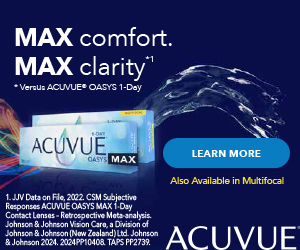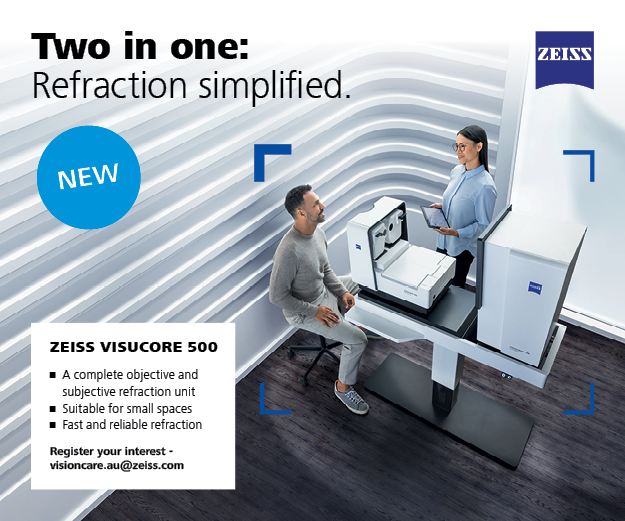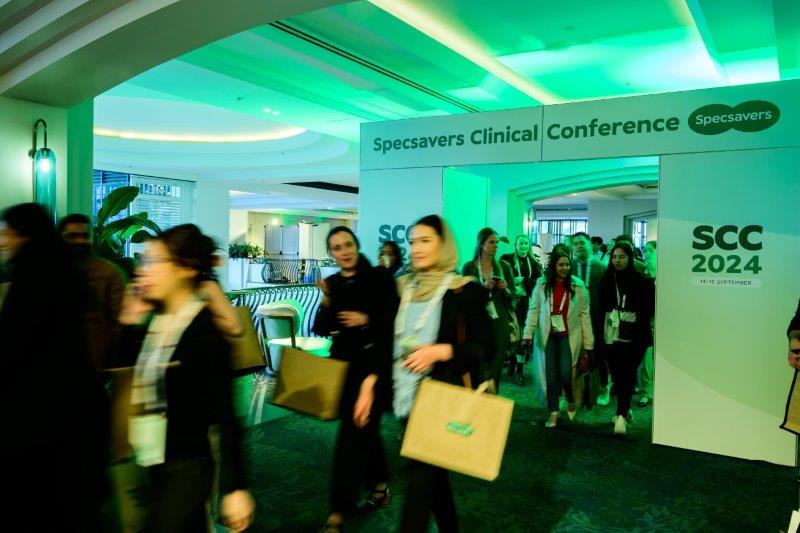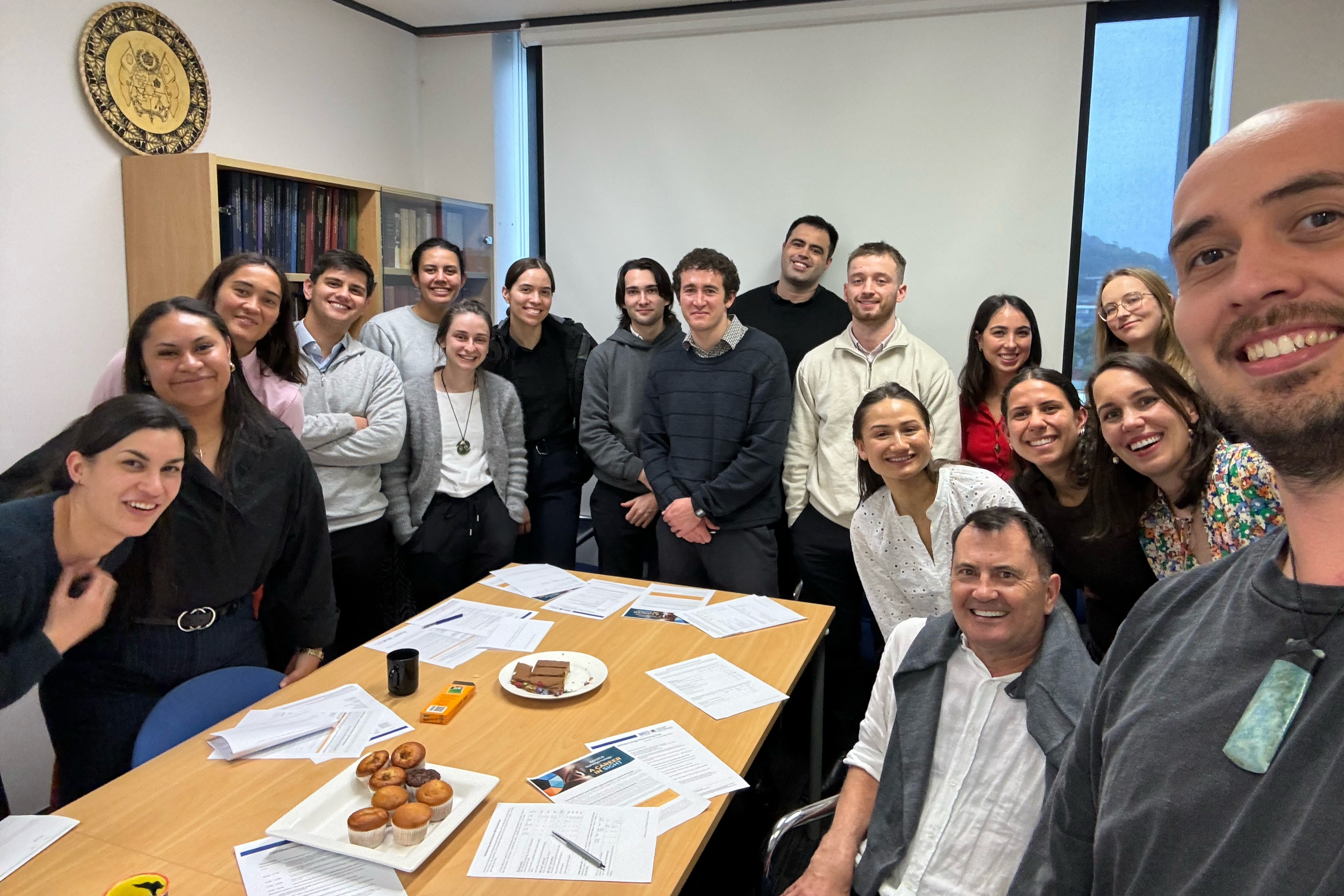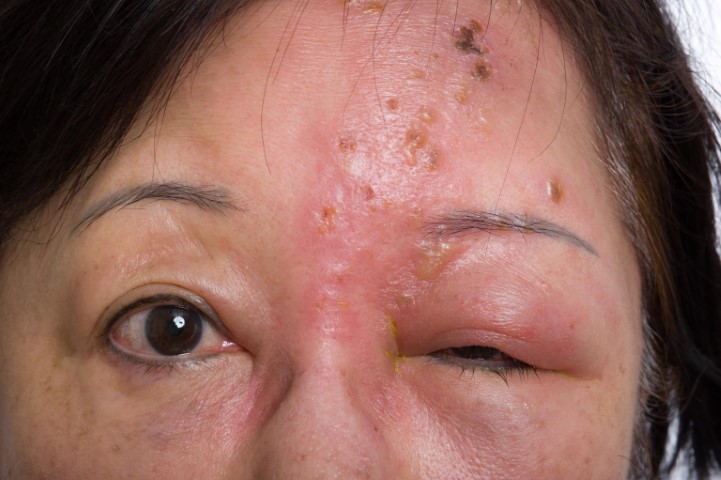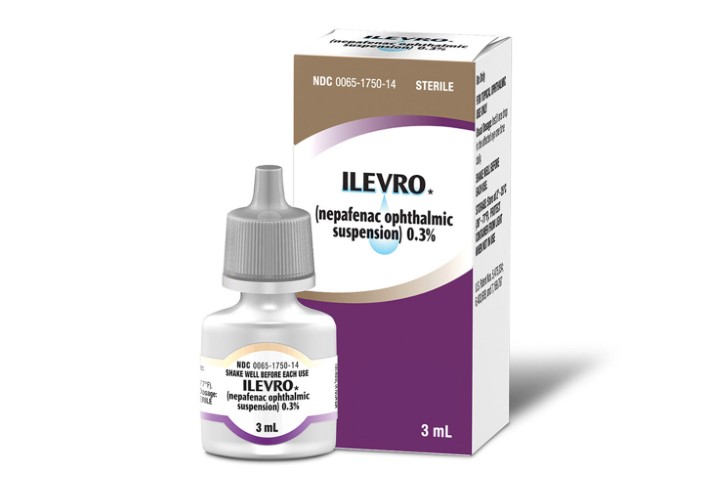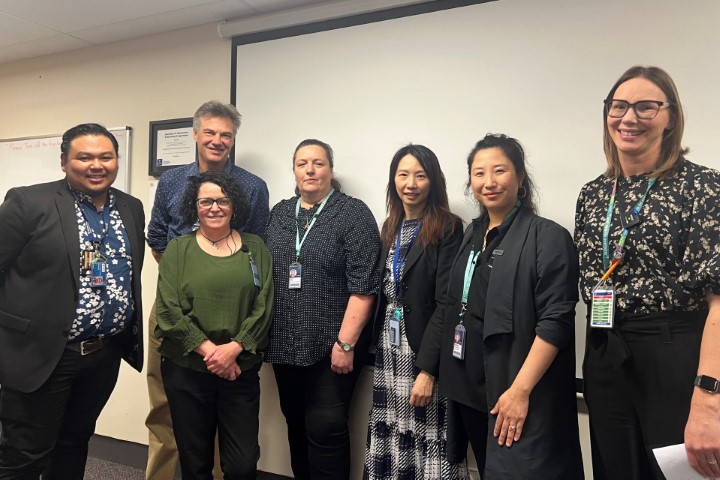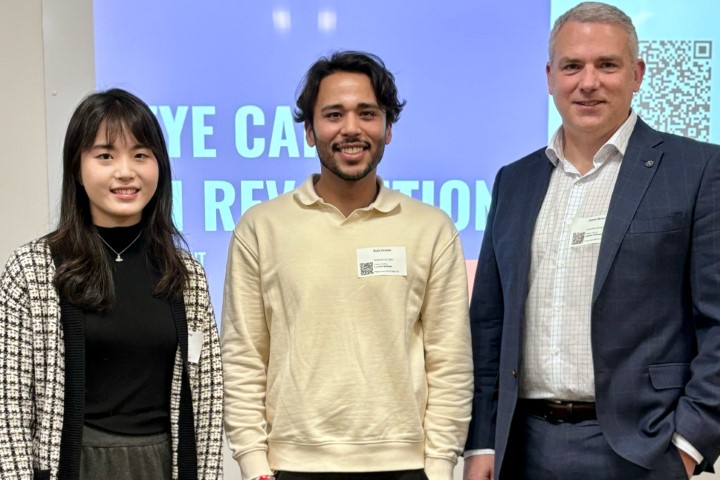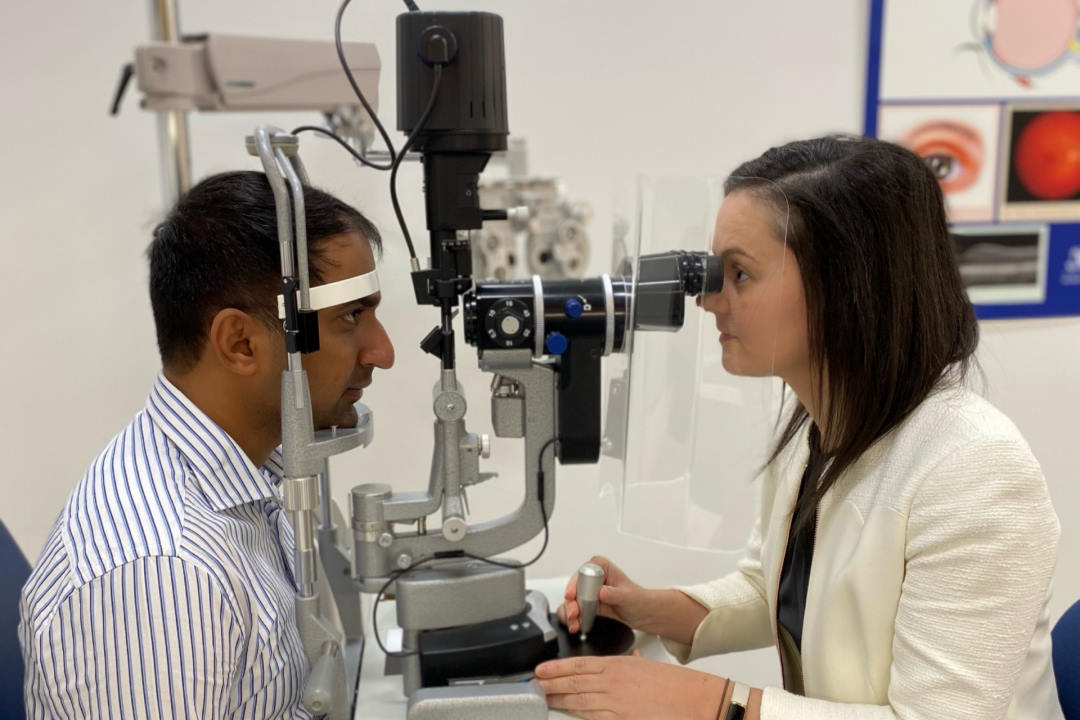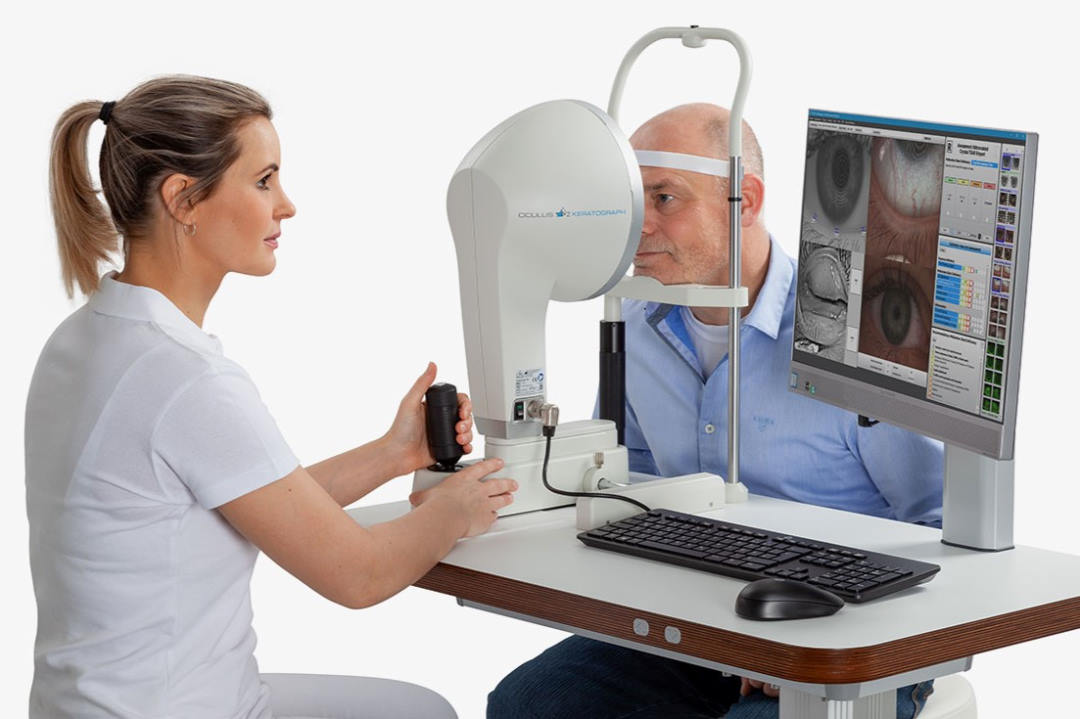Orthokeratology for the post-LASIK cornea
Before we delve into our next case I should make it known that shortly after my last column was published in May I was summoned to an urgent meeting with the NZ Optics editorial team. Disturbing reports had emerged of the readership falling asleep when perusing the contents of Speciality Contact Lens Forum. Admittedly, I was shocked that there were optometrists out there not captivated by weird rigid lenses like me. I was issued an ultimatum: Inject some personality into my case reports, or be shipped back to the penal colony across the Tasman as penance for the crime of dull writing. Jokes aside it is great to see the energy Lesley and Jai are putting into the magazine and I’m excited and grateful to help out in a small way as NZ Optics evolves. Naturally I apologise in advance for the glut of ‘dad’ jokes and inappropriate puns that I now have free-reign to include in future missives. On to the optometry.
We all know that the results of laser refractive eye surgery are becoming increasingly impressive. However, the reality is that despite the success of the initial surgery, zero refractive error is not a guarantee as the years continue. One report suggests that in a 2-13 year follow-up of LASIK patients only 64.8% of low myopes and 37.3% of high myopes remained within ±0.50D of their attempted correction. Not only can a cornea change shape over time but the onset of presbyopia can humble/anger the patient that expects the rest of their life to be devoid of optical aids. Unsurprisingly the typical post-LASIK patient is highly reluctant to return to their bespectacled former selves. This is where contact lenses come in.
Traditionally I have found that even experienced optometrists are wary to meddle with a patient’s cornea that has already been permanently reshaped by our colleagues in ophthalmology. You wouldn’t re-glaze a cake created by a top chef would you? There are concerns about flap dehiscence, the structural weaknesses of a thinner cornea and perhaps a reluctance to incur the wrath of the patient’s eye surgeon should something go wrong, (“You put WHAT on my perfectly designed cornea?!”). Perhaps we should proceed with caution: research shows that the central flap interface following LASIK has only 2.4% of the strength of normal stroma, while the peripheral margin is 10x stronger at 28%. However, the general consensus is that the use of contact lenses in conjunction with lasered corneae is quite safe, as despite the histologically weakened interface LASIK flaps are quite robust. A fantastically designed study performed LASIK on the eyes of 18 rabbits then ejected them from a fighter jet cockpit to see what happened. They concluded that ‘healed LASIK flaps...are stable when subjected to a rapid vertical ejection at nine times the force of gravity. I would hazard a guess that this is more than most eyes endure with the use of a contact lens.
Fitting standard contact lenses to a remodelled cornea is not always straightforward however. Frequently, following laser eye surgery, the corneal curvature falls outside the normal limits that off-the-shelf soft contact lenses are designed for. By way of example I should divulge that I had a highly successful iLASIK surgery to both of my highly myopic eyes 3 years ago courtesy of Dr Trevor Gray and the team at Eye Institute. My refractive error was eliminated (but not my long axial lengths sadly, more on this in a future article) and I see a superb 6/4.8 unaided now with just a hint of astigmatism in my right eye. Needless to say I am one of the optometrists in the pro-LASIK camp. Prior to my surgery I was the best contact lens wearer I had ever met, with complaints of discomfort few and far between. At the launch of one of the fantastic new daily-disposables recently I popped a few -0.50D lenses in to test them out. Within 5 minutes they were in the bin. With every blink the vision would blur over, I had a noticeable foreign body sensation and the lens quickly dried out rendering it useless. Turns out my new 35D corneae did not take to kindly to a one-size-fits-all policy.
Post-LASIK dryness can also be a factor when using a contact lens, even with a customised daily RGP (which can be an excellent option to mask corneal irregularities and fit the unusual bespoke cornea). Fortunately, we live in a realm of new technologies and their applications: It may surprise you that many post-laser refractive surgery patients with troublesome residual refractive error do very well when fitted with orthokeratology lenses.
Cue the deafening sounds of aghastment. Fitting an already heathen device to a previously altered cornea? You must be mad! Indeed, in the main orthokeratology ‘bible’; John Mountford’s Orthokeratology: Principles and Practice published back in 2004, there is no mention of fitting orthoK to the post-LASIK cornea (although John is working on a new edition which may address this). A pubmed search shows no articles about orthoK on a post-LASIK cornea. Despite this many experienced orthokeratologists around the world practice ortho-K on the post-LASIK cornea with excellent results. I personally believe there is no more harm in fitting orthokeratology lenses to a lasered cornea than to a virgin example. It is the understanding of most orthokeratologists that the refractive effect of orthoK comes about due to modification of the epithelial cells of the cornea, although the jury is still out in some circles. The following OCT of a patient of mine using orthoK lenses for high myopia illustrates this by showing the thinned epithelium centrally and thickened layer para-centrally. The stroma remains relatively uniform. In contrast all forms of laser refractive corneal surgery involve permanent modification to the stroma of the cornea. The mechanism of refractive change in these two modalities are mutually exclusive. In post-LASIK orthoK the main challenge comes with designing the back surface of an orthokeratology lens to firstly fit the para-central cornea safely and comfortably, and secondly remodel the central epithelium in a way to correct the refractive error. Let’s look at an example:

Anterior OCT showing the thickness profile of the corneal epithelium in myopic orthokeratology. Note this well-fitted lens does not touch the cornea within the treatment zone.
A 67-year-old lady saw me due to the sudden appearance of flashes and floaters the previous weekend. Dilated exam revealed a benign posterior vitreous detachment. The woman had hyperopic LASIK carried out to both eyes 6 years before but she was having more trouble with her distance vision lately. She was also sick of using reading glasses. Unaided distance vision was only R 6/10 and L 6/12 and refraction revealed residual hyperopia of R +0.75/-0.25 x 175 (6/5), L +1.50/-0.50 x 85 (6/5). Her topography confirmed her hyperopic LASIK with tangential maps showing a flatter para-central ring encircling a steeper central cornea. Her left cornea was slightly steeper which was surprising given the higher hyperopic error. Given the foundations were essentially already in place hyperopic post-LASIK orthokeratology was offered to this patient. We chose to further steepen her cornea in a monovision set up, with her dominant right eye for distance and her left for near tasks.

Our patient’s post hyperopic LASIK corneal topography showing the relatively steep central cornea R+L respectively
In these complex cases using topography-based lens design is a no-brainer for me. To marry the correct peripheral fit with the appropriate sagittal height and base curve for the desired refractive change with a trial lens would be time-consuming and inaccurate, even if such a post-LASIK hyperopic design set existed. Instead I plugged the patients topography into rigid lens simulation software EyeSpace (Innovatus Technology) and designed a custom hyperopic orthoK lens for each eye. Because the cornea is reasonably regular we can use a rotationally symmetrical lens to get a great fit. Of course with all hyperopic orthoK the lens base curve is steeper than the existing corneal curvature to create additional plus power.

EyeSpace simulation, post-lens tear profile and the real lens on the left eye. Note the slightly irregular central tear profile due to the LASIK result.
One month later the patient was thrilled with her vision as she was no longer using reading glasses and seeing well at distance. Her right eye was seeing 6/6 N8 with a modest central steepening. Her left eye was 6/15 N4 with an impressive 4.7D steepening in a well centred location. Importantly she experienced no discomfort and her cornea was pristine with no trace of corneal insult.

Axial difference map of the left eye showing the well-centred +4.7D topographical change
Unfortunately, not all post-LASIK refractive error is regular. Post-LASIK ectasia can be highly debilitating and severely limit the corrective options available. In some cases, highly customised orthoK lenses can be used to remodel the irregularity and improve vision. A patient of mine in his mid-50’s had myopic LASIK done over a decade before but had developed severe post-LASIK ectasia in his right eye and moderate ectasia in his left eye since then. The better left eye had a variation of 7D of axial power along the 150 meridian leading to unaided acuity of 6/12 and a refraction of -1.00DS (6/6 with aberrations). This gentleman was very keen to explore his orthoK options and we settled on fitting only the left eye with a custom myopic ortho-K lens. This had an aspheric back optic zone with a diameter to match the treatment zone of his myopic LASIK.

Our second patient’s EyeSpace simulation of his customised myopic orthoK lens over his irregular post-LASIK left cornea
In these cases, interpreting the axial difference map can require some thought. Rather than creating a uniform degree of refractive change in the form of a ‘bulls-eye’ that we are used to with simple myopic orthoK, instead we are trying to create a post-orthoK cornea that is more regular. This will decrease the aberrations in the optical system. You will see in the axial difference map that the orthoK lens has succeeded in steepening the flat section of the cornea at axis 150, and flattening the steep section opposite this. The patient was seeing 6/6 unaided with only a quarter diopter of residual cylinder when using his lens. He commented that the halos around streetlights were much reduced, although not completely eliminated. His main gripe was that we couldn’t do the same treatment on his severely ectatic right cornea due to its ‘munted’ irregularity! Patients with other forms of irregular corneae such as forme fruste keratoconus can also be treated with orthoK lens in a similar way (often with an inferior ‘tuck’ quadrant specific design) as long as the practitioner is mindful to monitor the cornea at each aftercare for signs of progression or insult.

Axial difference maps showing our second patient’s irregular post-LASIK corneal topography in Exam A, the more regular post-orthoK cornea in exam B and the unusual difference map showing how this patient’s cornea has been modified to decrease the aberrations due to his ectasia
These cases highlight how versatile the practice of orthokeratology is these days. No longer is it reserved for simple myopia and it can be a great problem solver for those particular patients that are determined to be spectacle-free! It is encouraging to know that when my LASIK goes kaput (as it is bound to, given my eyes’ record to date) I will have orthoK up my sleeve to restore my super-vision..
Tune in next time as I regale you with a story about the night we invented a revolutionary contact lens at the pub, and how it did not turn out to be quite as ingenious as we expected…
References
Dirani M, Couper T, Yau J, Ang EK, Islam FM, Snibson GR, Vajpayee RB, Baird PN. Long-term refractive outcomes and stability after excimer laser surgery for myopia. J Cataract Refract Surg. 2010 Oct;36(10):1709-17.
Schmack I, Dawson DG, McCarey BE, Waring GO 3rd, Grossniklaus HE, Edelhauser HF. Cohesive tensile strength of human LASIK wounds with histologic, ultrastructural, and clinical correlations.J Refract Surg. 2005 Sep-Oct;21(5):433-45.Goodman RL, Johnson DA, Dillon H, Edelhauser HF, Waller SG. Laser in situ keratomileusis flap stability during simulated aircraft ejection in a rabbit model. Cornea. 2003 Mar;22(2):142-5.
About the author
Alex Petty is a Kiwi optometrist who graduated from the University of Auckland in 2010. He has an interest in specialty contact lenses, ortho-K and myopia control.




